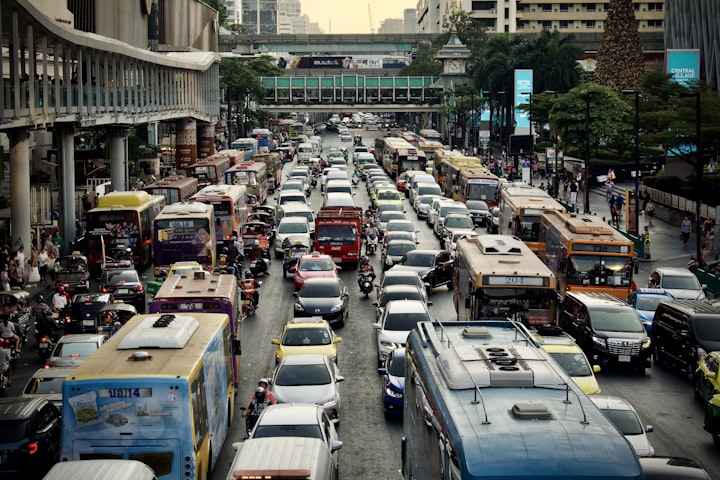Why Traffic Jams sometimes form for no reason
The Unknown truth

Traffic jams are a frustrating and all-too-common experience for motorists around the world. While congestion often occurs due to factors such as accidents, road construction, or heavy traffic volume, there are instances when traffic jams seem to form seemingly out of nowhere. In this article, we delve into the fascinating phenomenon of traffic jams that occur for no apparent reason, exploring the underlying causes and shedding light on the complex dynamics of traffic flow.
I. The Nature of Traffic Flow:
1.1. Flow and Capacity:
Traffic flow refers to the movement of vehicles on a roadway system. Every road has a maximum capacity, which is the number of vehicles it can handle efficiently. When the number of vehicles exceeds this capacity, traffic congestion occurs.
1.2. The Breakdown Phenomenon:
Traffic breakdowns are situations where the flow of traffic slows down or comes to a complete halt, even in the absence of external factors such as accidents or road closures. Understanding the dynamics of traffic breakdown is crucial to comprehend why traffic jams sometimes materialize unexpectedly.
II. The Butterfly Effect of Driving:
2.1. The Ripple Effect:
Traffic flow is interconnected, and even minor disruptions can have far-reaching consequences. When a driver suddenly brakes or changes lanes abruptly, it can cause a chain reaction, leading to a ripple effect that propagates backward through the traffic stream. This ripple effect can amplify over time, resulting in traffic congestion that seemingly has no initial cause.
2.2. The Role of Human Behavior:
Human behavior plays a significant role in traffic dynamics. Small actions, such as following too closely, abrupt lane changes, or inconsistent speed, can create a domino effect that disrupts the smooth flow of traffic. These behaviors contribute to the formation of traffic jams, even when there are no external factors at play.
III. Traffic Wave Theory:
3.1. Understanding Traffic Waves:
Traffic wave theory suggests that traffic jams can emerge as a result of fluctuations in the flow of vehicles. These fluctuations can arise due to variations in driving behavior, lane changes, or momentary slowdowns. When the density of vehicles reaches a critical point, even small perturbations can trigger a wave-like pattern that propagates backward, causing congestion.
3.2. Bottlenecks and Merging Points:
Bottlenecks, such as narrow lanes, poorly designed intersections, or merging points, can exacerbate traffic congestion. When vehicles are forced to merge or change lanes in a restricted area, it disrupts the flow of traffic and creates a bottleneck effect. Even a single driver hesitating or failing to yield can initiate a chain reaction of braking and congestion.
IV. The Role of Traffic Management:
4.1. Intelligent Transportation Systems:
Advances in technology have paved the way for intelligent transportation systems (ITS) aimed at managing traffic flow more efficiently. These systems utilize real-time data, traffic monitoring, and adaptive signal controls to optimize traffic flow and minimize congestion. ITS can help mitigate the occurrence of unexpected traffic jams by enhancing coordination and providing timely information to drivers.
4.2. Driver Education and Awareness:
Educating drivers about the impact of their behaviors on traffic flow and promoting responsible driving practices can contribute to reducing the occurrence of traffic jams. Encouraging concepts like maintaining safe distances, using turn signals, and avoiding sudden maneuvers can help improve overall traffic flow and minimize disruptions.
Conclusion:
Traffic jams that seemingly materialize out of nowhere can be attributed to the complex interplay of various factors, including human behavior, traffic wave dynamics, and bottlenecks. The butterfly effect of driving, where minor disruptions propagate and amplify through the traffic stream, can lead to congestion without an apparent initial cause. Understanding these underlying causes can help us develop strategies for more efficient traffic management, invest in infrastructure improvements, and promote responsible driving practices. By addressing these issues, we can work towards minimizing traffic congestion and creating smoother, more enjoyable commuting experiences for everyone.
Send a mes






Comments
Divine Dawn is not accepting comments at the moment
Want to show your support? Send them a one-off tip.